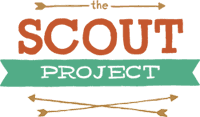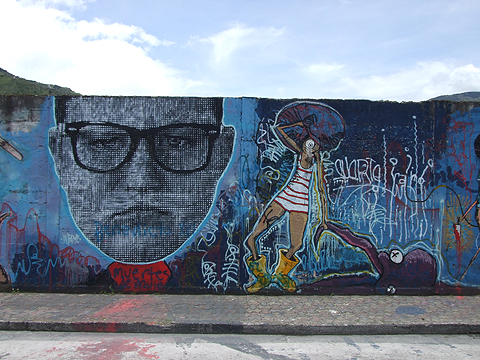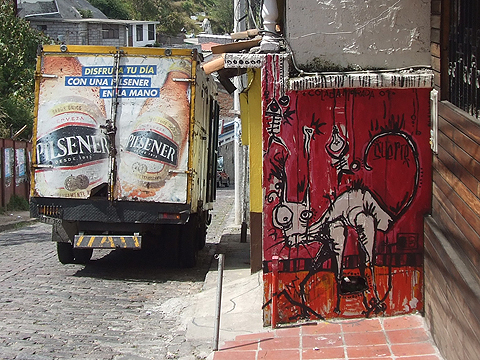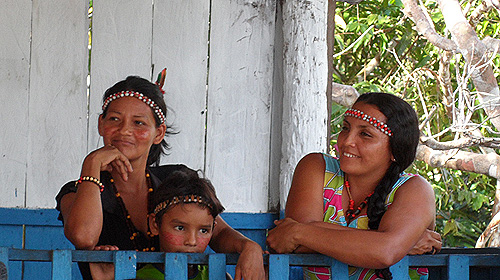Spotted in Baños, Ecuador and the Guápulo neighborhood of Quito, Ecuador.
Recipes from Abroad // Bahamian Macaroni & Cheese
I boarded a plane for Nassau, Bahamas most excited about the beach. There are few places I feel as rested and relaxed as a stretch of white sand and turquoise water. However, I’m a self-proclaimed foodie too and when I travel I always enjoy exploring new cuisine and sampling old favorites with a new spin. So when I found out that our stay in Nassau would include a meal in the home of a local, courtesy of the People to People program, I was pretty excited. There was only one problem: I don’t eat seafood. What’s the most consumed meal in Nassau? As fate would have it: conch. Fried, battered, steamed, cut up and served in a soup – Bahamians love their conch.
I tried not to worry. Surely there would be at least one or two other things on the menu besides conch. Plus, I’d give it a try. It’s only fair when you are a guest in another person’s home. When we pulled up to the front of our host’s home, darkness already descended, torches burning – I had a good feeling. Our kind and enthusiastic host Lesley must have known I was coming. Not only was there more than conch on the menu, there was my favorite: macaroni and cheese! Prepared as a baked dish, it was cheesy and gooey and not too tart or strong in any way that might be considered anything but memorable. I’ve sampled many versions of this pasta dish over a period of quite a few years and the memory of that macaroni and cheese will stay with me for many more.
Lesley is a woman of many talents who created a table for us that was just stunning and a meal that was unforgettable. Truly it was beyond what I ever expected to find outside a five-star restaurant during our trip. We stayed long into the night and talked over all manner of subjects. Wine and beer flowed, friendships were formed. Food was the great equalizer that night and we were joined together because of it.
[alert style="info"]
Bahamian Macaroni & Cheese
Note: Lesley warned that “Bahamians tend not to measure when cooking, we go by taste and the feel of the dish when mixing,” but tried her best to come up with proportions for this recipe. Thanks Lesley!
Ingredients:
1 lb box of Muellers (or any other brand) elbow macaroni 1/2 stick of margarine/ butter 1 lb grated cheddar (yellow) cheese 1 1/2 cups herbs (diced onions, sweet peppers & celery) 3 beaten eggs 1/3 cup Tabasco sauce salt 2 – 3 cups of evaporated milk
Directions:
Boil pasta until cooked and tender (approx 15 min). Drain pasta. Add margarine, diced herbs, grated cheese, beaten eggs, Tabasco sauce, evaporated milk and salt to taste. Mix by hand ensuring all of the ingredients are all blended together.
Pour in a greased Pyrex dish or pan. Sprinkle/dust with paprika. Set oven to 350 degrees and bake for 45 minutes to an hour until golden.
Notes: If you want to make it a little spicy, add some chopped scotch bonnet pepper (in the Bahamas we call it goat pepper). You can also add extra grated cheese on top if you want it cheesier. We also use margarine/butter to grease the pan.
Serves 6 – 8 persons. This is a calorie loaded dish. [/alert]
Scout Adventure #1 // Visiting A Secluded Tribe in Brazil
A group of Brazil’s Kambeba people, an indigenous tribe in the Amazon rainforest, are open and welcoming to people who want to learn more about their traditions and culture.
One way to reach them is by boat from Manaus, Brazil. Here's a view of cruisers from the Iberostar Grand Amazon disembarking to the village. The blue building is the town hall and the one trimmed in red is the church.
On the beach: FUNAI is the Brazilian government body that establishes and carries out policies relating to indigenous peoples.
In the town hall, the chief gave a short welcome speech while a guide translated. The children of the tribe listened intently whenever their chief spoke. There are only a little more than 50 people living in the village, most of which seem to be children. The chief and villagers joked that the only thing to do there was to make more children.
Our guide told us Kambeba actually means the “Flat Head” tribe, a name given by other indigenous nations. The Kambeba people used to have a ritual where they would compress their heads with wooden boards. This happened from birth until the desired form was made. The Kambeba people are working on documenting their history through several books, such as the one shown above.
The children performed two of their traditional dances for us. That man standing in the middle of the picture is the chief (yes, he’s wearing athletic shorts!).
After the introduction, the tribe led a tour of their village. Above is the church.
This is the outside of a typical Kambeba home. All the houses were on stilts because the river has been known to rise 15 to 20 feet in a season.
Another house. I was trying to capture a collection of pots and pans hanging in neat rows just inside the door, but it was too dark inside. Note the satellite dish!
Next stop: the school. It was well equipped with books and other supplies, relatively speaking. The tourist dollars from cruise visitors probably helps. At the school, children are learning both their native language and Portuguese.
Many of the trees around town were labeled. Health nuts are probably jealous that these folks have açaí berries growing right in their backyard.
Another way Kambeba people make money is by crafting jewelry. The village courtyard has several gazebo-like stands set up in a circle.
This might be a remote village, but a love of soccer still found a way to get here (perhaps the satellite shown above helped!). Here the goal post was made out of branches — look closely between the two boys and you can see one of the posts.




























